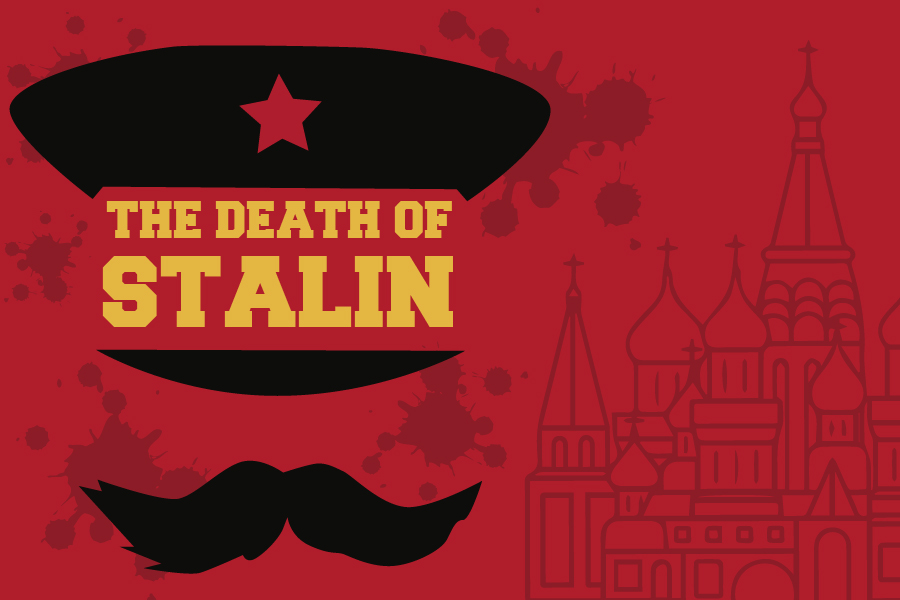
“The Death of Stalin” checks every box of a classic dark humor film
People always look to classify films. “The Godfather” is classified as a drama and “Star Wars” as science fiction. “The Death of Stalin,” released in the U.S. in March of this year, can be just as easily classified: dark comedy.
The significance of the film is just how expertly it achieves the requirements of a dark comedies. The humor in “The Death of Stalin,” boiled down, is analogous to that of “The Three Stooges”: it’s slapstick, and laughter arises from the misfortune of others. That being said, the slapstick nature of the film doesn’t arrive with Stalin bonking Khrushchev on the head like Moe to Curly, but resides in its treatment of everyone else. The fleet of Soviet officials (puppeted well by impressive actors like Steve Buscemi and characters like Khrushchev, Beria, Stalin and Zhukov) have complete disregard for any life other than themselves — and hence the dark “slapstick” arrives in its purest form. Properly employing these comedic ideals is what brings “The Death of Stalin” into the realm of good, if not great, films.
A scene early in the film follows Lavrentiy Beria, the chief of the secret police, through a torture facility. He passes a few rooms with people being beat, another few rooms ringing with executionary gunfire and finally past a staircase. Down the staircase rumbles the comedy — or, more literally, a man tied to a wooden log. No emotion crosses Beria’s face, not even a slight recognizing glance at the poor log-tied fellow. It’s a gruesome and morbid scene. Why, then, did the theater rumble with a low thunder of laughter? Why isn’t the audience turned away from the gore and insensitivity to death?
Films rely on its characters’ reactions for deeper meaning. Take “E.T.,” for example, when the space dweller goes home and taps the boy on the head: it’s sad. Specifically, it’s sad because the emotions related to loss are on the boy’s face, and audience members immediately empathize. Without the boy, there isn’t anything sad about E.T. boarding his spaceship. In regard to “The Death of Stalin,” the humor comes from a lack of that exact emotion. When Beria does nothing, he prompts the audience to do the same — not react at all. And somehow, in this lack of a reaction to death, the film kindles humor.
That is what makes “The Death of Stalin” a successful and funny film; the humor is not in its well-placed one-liners — which, to be clear, the film certainly showcases — but in its deadpan, emotionless delivery of countless deaths. The constant disregard for human life and emotion, not unlike traditional Vaudevillian humor, is inflated to obscene proportions to provide a masterful display of Iannucci’s hellish Soviet Union and the squabbling, childlike adults who run it.
“The Death of Stalin” provides a healthy sum of dark humor, and if one’s tastes abide to such a strict form, they will be left with teary eyes and stomachs of giggles.
Written by: Nicolas Rago — arts@theaggie.org


